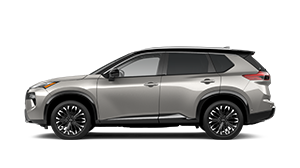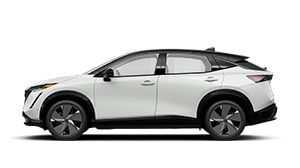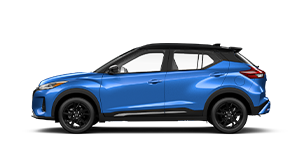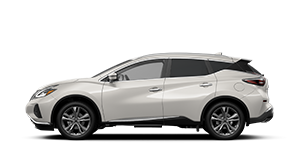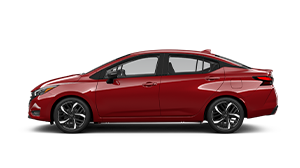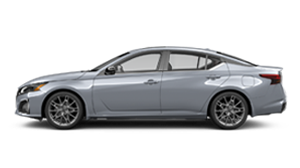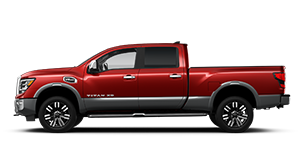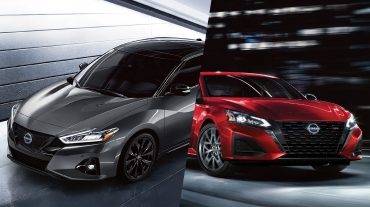Start your online purchase at participating Nissan dealers. Get a quote, book a test drive and even buy your Nissan from home. [[3355]]
THE XTRONIC CONTINUOUSLY VARIABLE TRANSMISSION®
October 18, 2019

Nissan's XTRONIC CVT continues to evolve in its third generation with D-Step Logic Control
Nissan is a forerunner in Continuously Variable Transmission technology and its latest models are now equipped with its third-generation XTRONIC Transmission with D-Step Logic Control.
The latest development in continuously variable transmissions (CVT), D-Step Logic Control is computer software that uses dynamic inputs like vehicle speed, accelerator pedal position and application speed to determine the ideal gear ratio needed to provide smooth, constant acceleration.
For drivers, it feels very much like the automatic transmissions they are familiar with. D-step shift logic can hold a constant gear ratio like a conventional step-gear automatic transmission but adds the flexibility and smoothness of a CVT.
The changes in the CVT that debuted in the 2017 Pathfinder received favorable attention from the automotive media:
“...Nissan's many programming changes to the CVT are so substantial and so mimic a regular gearbox that if you did not know a CVT from a sock drawer, you would never question how the power from the engine is transferred..”- Autotrader
D-Step Logic Control is found in many Nissan CVT equipped models such as Altima, Murano and the sporty Maxima. RPMs build as speed increases providing enhanced drivability with a direct, crisp shift feel – there’s no “hunting” or shift shock. On CVT equipped Nissan SUVs like the Pathfinder, the advanced XTRONIC transmission design also helps keep engine RPM optimized while towing without the typical “hunting for a gear” feel.
In the Versa and Sentra models equipped with third-generation XTRONIC transmission, the gear ratio range from low to high is expanded. In fact, the transmission ratio is 7.3:1, which is a broader ratio than you'll find in an average automatic, and far superior to the 6.0:1 you'd find in a similar model vehicle. The CVT is more streamlined, too, as it’s 13% lighter and 10% smaller. The goal is to ensure the fuel efficiency improves at least 10%.
What is a CVT Transmission?
A Continuously Variable Transmission (CVT) provides simple, efficient power delivery creating better fuel economy than traditional transmissions. With CVT, shifting is seamless – the vehicle performs as though it has a variable gear for every driving situation, and you won’t feel any shift shock. It uses a steel belt or chain and a pulley system to move up and down the gear ratio in continuously smooth motion, providing seamless, stronger acceleration and increased fuel economy.
CVT vs Automatic Transmission
The real difference between a continuously variable transmission (CVT) and an automatic transmission (AT) is that while both are technically automatic transmissions and don’t require the driver to use a clutch to manually change gears, a traditional automatic transmission has fixed gears -typically ranging from five to nine in number. Nissan's XTRONIC CVT and all CVTs don’t have any traditional fixed gear ratios at all. There is no “shifting” in the conventional sense of the word.
"15% increase in fuel efficiency, accelerates faster, runs quieter."
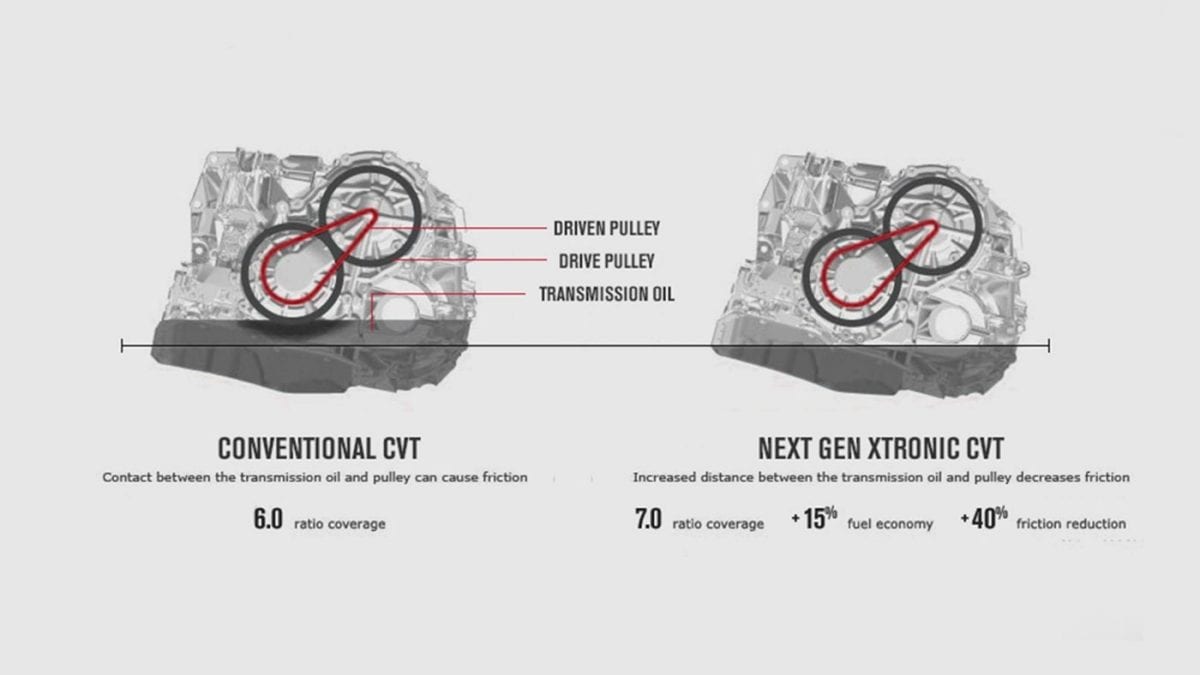
What does this mean for the driver?
- Stronger acceleration from a standing start
- Rapid & seamless acceleration during merging and passing
- Smooth and quiet at cruising speed
- Always in the right gear - no gear hunting
- Significant improvement in the fuel economy
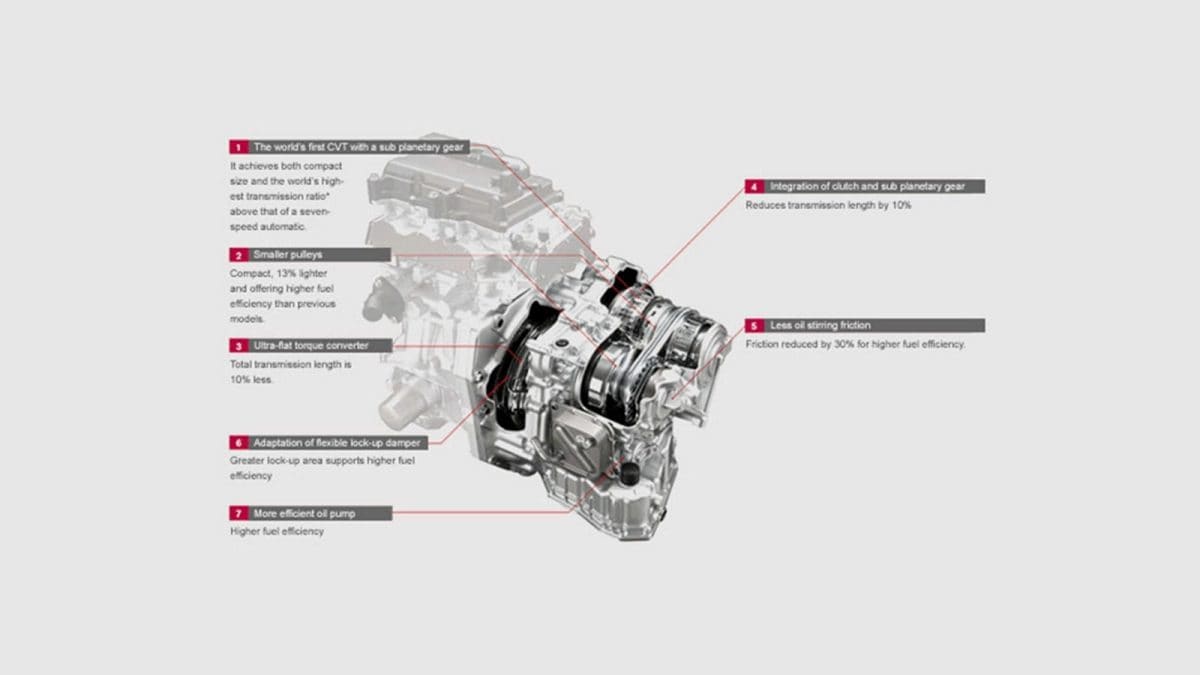
"In 1993, the CVT was banned from the world's most prestigious racing series. It was considered an unfair advantage."
Current Nissan Models with XTRONIC CVT[[683]]:

XTRONIC CVT® is available on most vehicles across the Nissan lineup, include SUVs like Murano and Rogue.
CVT DURABILITY
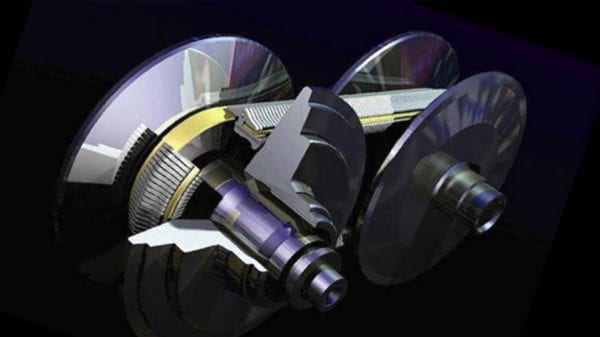
A CVT vehicle has fewer moving parts, which reduces friction and heat. This reduces wear and tear on your transmission, meaning it works harder, longer.
With fewer moving parts, the CVT is lighter, too. The lighter weight means increased performance and lower fuel consumption—a win-win.
"CVT friction is reduced by approximately 40% - a great contributing factor to fuel economy."
Frequently Asked Questions about CVT
What's the difference between a CVT and an automatic transmission?
A CVT transmits power using two variable diameter pulleys and a high-strength steel belt or chain. A traditional automatic transmission typically uses 4-9 fixed gears to transmit power.
Is the CVT a new technology?
Nissan first adopted the Continuously Variable Transmission globally in 1992, and have gone through constant development, enhancement, and improvement ever since. The first major application of the XTRONIC CVT in the U.S. marketplace was the 2003 Nissan Murano.
What kind of reliability can I expect from a CVT?
A CVT has fewer moving parts, which translates to reduced friction and heat. Parts exposed to less friction and heat may last longer than traditional components.
Does the Nissan XTRONIC CVT Have a Warranty[[119]]?
We believe in taking care of you and your vehicle. That’s why every Nissan XTRONIC CVT comes with a 5 year/60,000 mile (whichever comes first) limited warranty for CVT repairs, replacements or related towing.
What kind of transmission fluid does a Nissan XTRONIC CVT use?
The required fluid for all XTRONIC CVT-equipped Nissan models is Nissan CVT Fluid NS-3. Do not use Automatic transmission fluid (ATF), Manual transmission fluid, or mix this fluid with other fluids, as it may damage the CVT transmission and void the warranty. When checking or replacement of XTRONIC CVT fluid is required, we recommend a Nissan dealer for servicing.
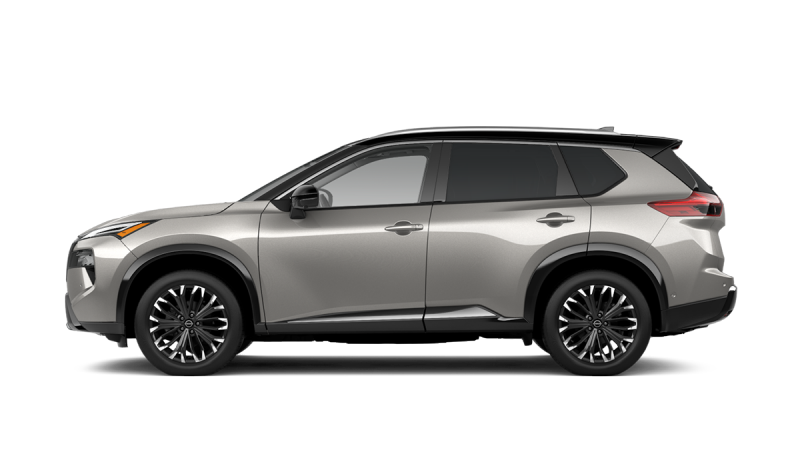
Related Articles
Want To Stay In Touch?
Follow us or sign up for the latest news and offers from Nissan.
